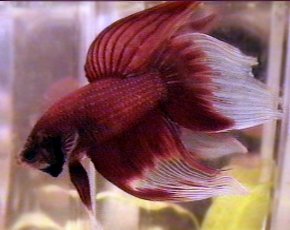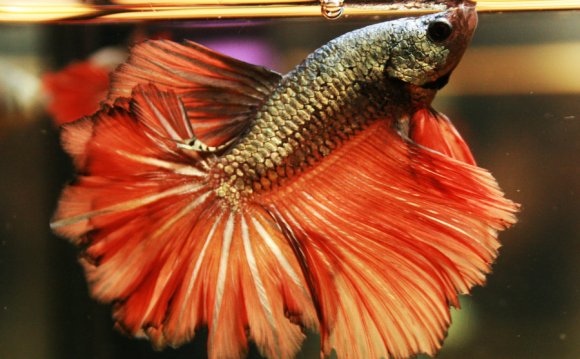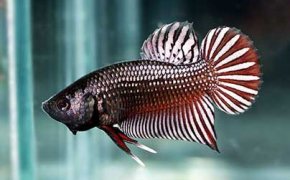|
As you already know, male bettas originally had short fins. In the wild, all bettas still do. Long fins was a mutation from the original form and (surprisingly) is dominant. Selective breeding has created many different shapes of tails and finnage variations and I know some breeders who are focusing all their efforts in obtaining specific tail shapes. As years go by, the standards of what is a desirable tail shape have changed, and continue changing. The "droopy" veil tails have been replaced by the more showy fan tails, then by Delta tails, Super Delta tails and full Halfmoon tail spans. Last but not least teh latest finnage variation is the crowntail, which was created by selectively breeding combtails. confused and lost? :) Don't worry, by the time you have looked at all the photos I am going to provide you with here, you will become quite the betta finnage expert (or at least think you are LOL).
So here are a few pictures to illustrate these otherwise abstract shape names:
|
ushort tail
|
Initially, ALL bettas had short tails. The small fins of a fully grown wild male betta may not be showy but think about it, would you rather be beautiful, or be alive? In the wild bettas need to be fast to escape predators and the long fins would be nothing but trouble. Kind of like going to a war zone in a wedding dress!! These short finned bettas look like our female bettas, which as you know, don't grow long fins. Perhaps in the future this also, may change. Perhaps in the future this also, may change. |
|
uveil tail
|
Delta tail was the first step before achieving halfmoons (see below). Delta tail shape ism like its name indicate more of a delta or a triangular shape if you will. It is like a fan tail but with crisp, sharp angles at the tail edges. The sharper, the better. Delta tail are also symmetrical, and the angle may vary, but of course the wider the angle, the better. If the angle is wide, say above 130°, then we have what we call a "super delta tail" (see below). And if the angle reaches a perfect 180° (or more) then we have a halfmoon!
|
|
usuper delta tail
|
Comb tail is not a tail shape per say but it does affect the way finnage looks so I wanted to cover it here. Combtail is a genetic trait that extends the ray beyond the fin edge, hence making the edge of the fins look like a comb. It can be observed in any betta tail shape variation. I personally always loved the combtail trait and was thrilled when breeders starting working on improving it and tried to create a version with exaggerated long extending rays (see below)
|
Source: www.bettatalk.com
|



